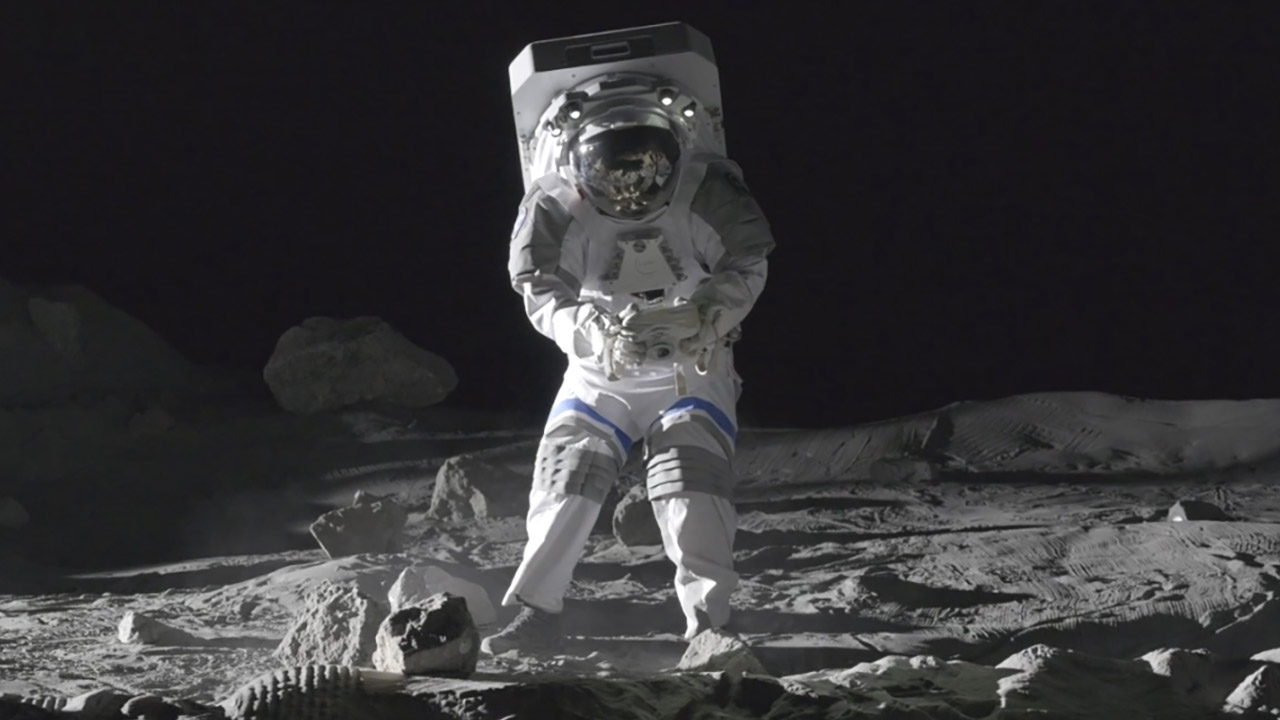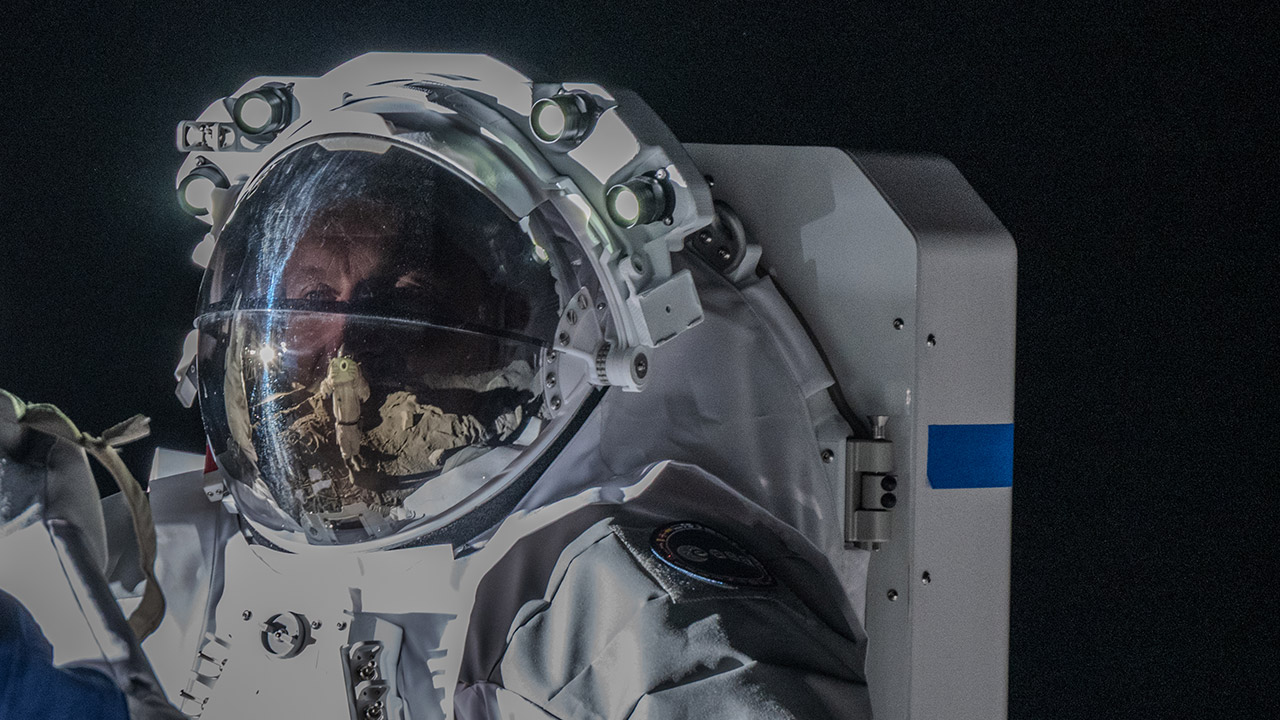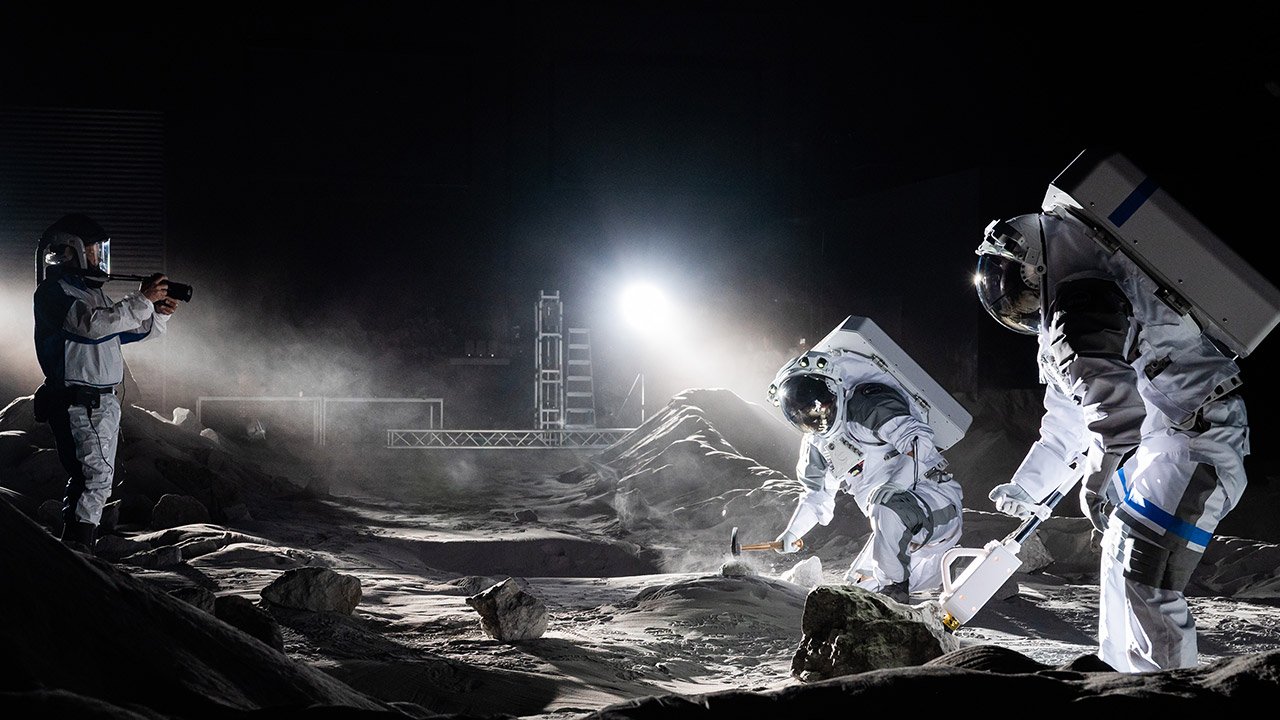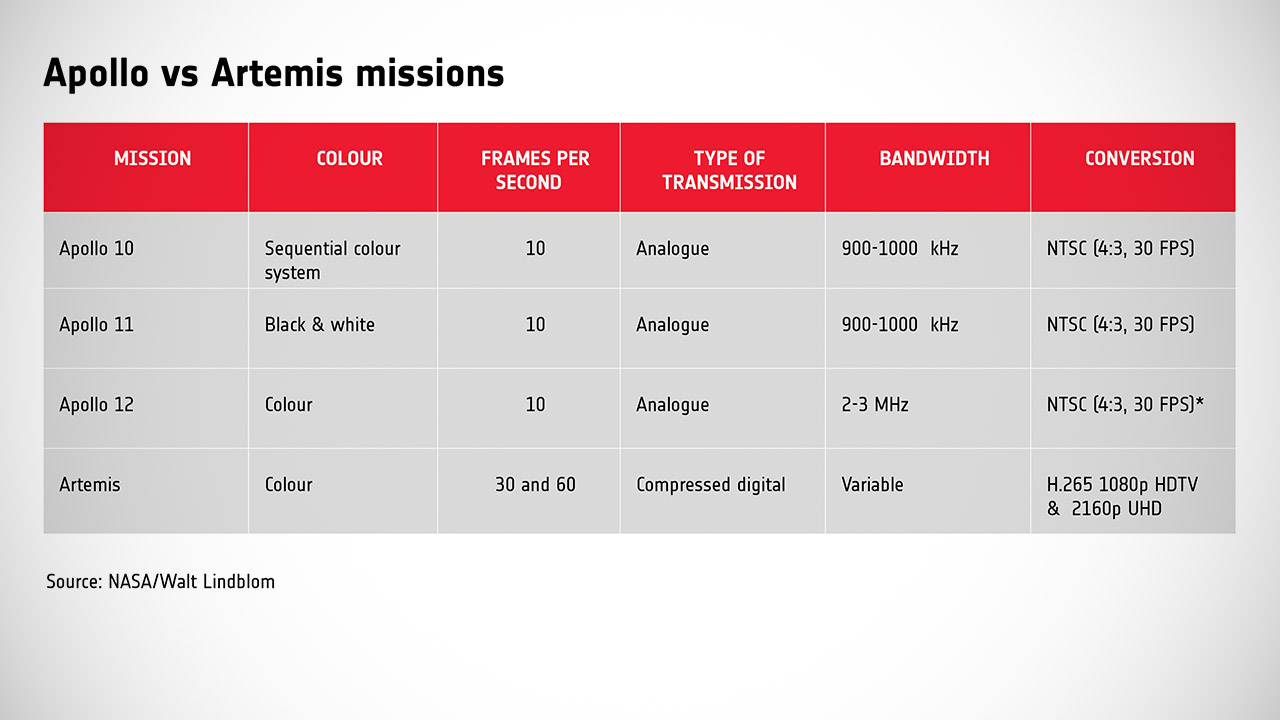
Photo credit: ESA/M. Cowan
Half a century ago, the world watched Neil Armstrong’s first steps on the Moon through grainy, black-and-white footage that felt like a transmission from another era. Today, as humanity gears up for a new wave of lunar exploration with NASA’s Artemis program, the visuals promise to be nothing short of spectacular. High-definition video, vibrant colors, and smooth 60-frames-per-second streams are set to replace the fuzzy images of the Apollo days. But capturing these cinematic moments on the Moon’s harsh, dusty surface is no small feat. At the European Space Agency’s LUNA facility in Cologne, Germany, astronauts and engineers are rehearsing every detail, from snapping selfies in spacesuits to filming dynamic lunar walks, ensuring the next Moon landing is a visual masterpiece.
The LUNA facility, a joint effort between ESA and the German Aerospace Center (DLR), is a moonscape on Earth—a sprawling, regolith-covered arena that mimics the lunar surface down to its gritty, abrasive dust. Here, astronauts don protective gear to shield themselves from the simulated lunar soil, which clings to everything and can distort images. Melanie Cowan, ESA’s representative in the Consultative Committee for Space Data Systems (CCSDS) Motion Imagery and Applications Working Group, describes the challenge: “Moon dust is one of the biggest hurdles for filming. Every step kicks up particles that float and scatter light, making it tough to get a clear shot.” Her experience at LUNA, where she filmed in this surreal environment, gave her a firsthand taste of the lunar challenge. “It’s as close to the real thing as you can get without leaving Earth,” she says, noting the need to dodge walls, cables, and curtains to keep the footage convincingly lunar.
- Detailed Lunar Replica - Features a detailed Eagle lunar lander replica with lunar surface, crater, footprints, and U.S. flag for a realistic space...
- Realistic Modular Model - This modular set includes a descent stage with gold-colored landing pads, panels, opening camera, laser hatches, and movable...
- Ascent Stage Interior - The ascent stage boasts a detailed interior with room for 2 astronaut minifigures, finished with an Apollo 11 Lunar Lander...

Photography on the Moon isn’t just about aesthetics—it’s a critical tool for science and exploration. The Handheld Universal Lunar Camera (HULC), a modified Nikon designed for Artemis missions, is being rigorously tested to handle the Moon’s extreme conditions, from temperatures swinging between -200°C and 120°C to the relentless radiation and dust. During ESA’s PANGAEA training in Lanzarote, Spain, astronauts like Rosemary Coogan and Norishige Kanai put the HULC through its paces, experimenting with telephoto lenses and flash settings in volcanic landscapes that echo the Moon’s terrain. Jeremy Myers, NASA’s technical lead for the HULC, explains the camera’s potential: “A telephoto lens lets astronauts zoom in on distant features, helping them decide where to explore next. We saw incredible detail in Lanzarote, far beyond anything captured during Apollo.”

Bandwidth limitations add another layer of complexity. Unlike Earth, where high-speed internet streams 4K video effortlessly, the Moon’s communication channels are constrained. The Apollo 11 broadcast, limited to black-and-white due to insufficient bandwidth, is a stark reminder of past challenges. Today, ESA’s Moonlight program aims to solve this with a constellation of five lunar satellites, including one dedicated to high-data-rate communications. This setup will beam HD video back to Earth, letting mission control and the public alike witness lunar exploration in real time. The CCSDS, a coalition of 28 nations, is standardizing encoding and transmission protocols to ensure these videos are crisp and reliable. “We’re creating a ground truth for video applications,” Cowan says.

Astronauts are also training to capture the Moon’s stark beauty in new ways. At LUNA, they practice dynamic shots—filming while moving, capturing reflections in helmet visors, or documenting a lunar rover’s tracks. These rehearsals go beyond technical skills; they’re about storytelling. The footage will not only aid scientists but also captivate a global audience eager for a front-row seat to humanity’s return to the Moon. Myers highlights the stakes: “The public expects more than grainy clips today. They want to feel like they’re walking on the Moon with the astronauts.”

The Moon’s south pole, the target for Artemis III, poses unique challenges for photography. Its permanently shadowed craters, potential treasure troves of water ice, are shrouded in darkness, while nearby sunlit areas dazzle with harsh light. The HULC’s high-sensitivity lenses and flash capabilities are designed to handle these extremes. During a simulated moonwalk at LUNA, astronauts tested the camera’s ability to capture detail in both pitch-black shadows and blinding sunlight. “The contrast is brutal,” says Matteo Massironi, a planetary geologist and PANGAEA instructor. “But the HULC managed to pull out details in both environments, which is critical for documenting the south pole’s geology.”
[Source]










